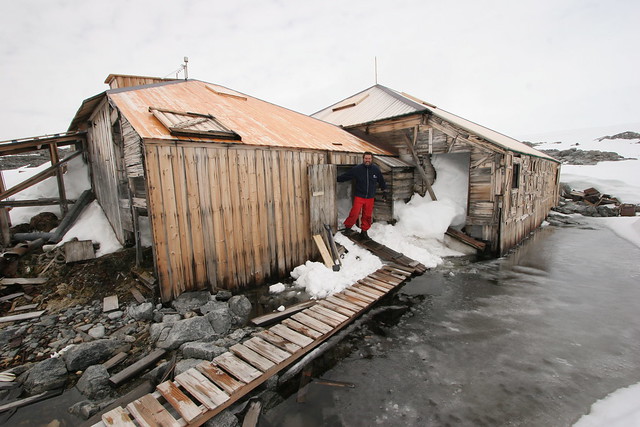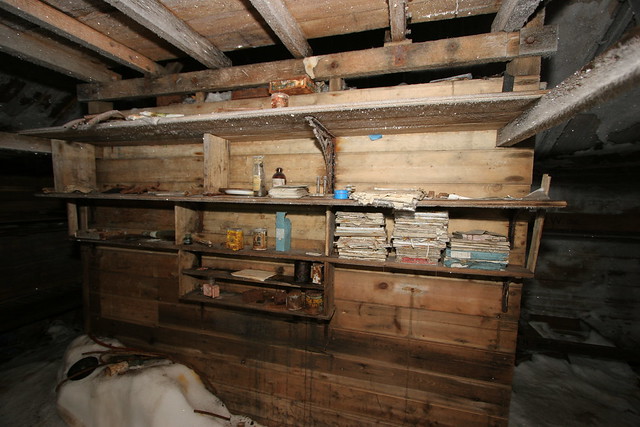
Mawson's Huts at Cape Denison, East Antarctica, are rare as just one of six surviving sites of the heroic era of Antarctic exploration. They were the main base of the Australasian Antarctic Expedition (AAE) of 1911-14 for nearly two years and in reality a cluster of fragile wooden buildings consisting of the accommodation area, workshop and three shelters used for scientific studies, two of which are now classified as standing ruins.
Eighteen members of the Australasian Antarctic Expedition of 1911-14 occupied the main area of the huts from February 1912 for just under a year. Seven of them, including a replacement wireless operator, spent an unscheduled further 11-month stay until December 1913 when they were rescued.
The expedition leader Douglas Mawson had his own private cubicle with the remaining seventeen building their bunks around the walls of the hut. By necessity, they were both narrow and restricted in length due to the limited size of the room. It measured just 7.3 x 7.3m (24 ft x 24 ft) covering 53 sq m (570 sq ft) and contained the kitchen, laundry, a storage area under the apex of the roof, sleeping areas and the work/eating table.
The smaller area of Mawson's expedition's Huts, just 5.5 by 4.9 m (18 ft by 16.1 ft), provided 27 sq m (291 sq ft) of space and housed the wireless and workshop. With 1.5m (4.9ft) wide verandas on three sides being used for storage of food, biological specimens and sleeping space for the huskies.
Both huts were taken south in prefabricated form. The main hut was made in Sydney and the smaller in Melbourne. The latter was originally planned to be a fourth base, but when coal supplies for the expedition's steam yacht Aurora ran low, Mawson's expedition decided to combine the two huts into one with the result of eighteen men sharing one cramped area.
They used scrap timber, including broken-down packing cases, to build the bunks. In the second year, when Mawson was late in returning from an ill-fated sledging journey, he was forced to remain for a second year when the Aurora had to sail without him. Six other members of the party elected to stay behind to wait or search for Mawson's party and the seven then spent a further 11 months in the huts.
Mawson did return after losing two companions during his 1000 km trek and during their second year the seven made small changes to the original bunk layout. The wireless was repositioned to the main room where the temperature was slightly higher and two of the original bunks were demolished to allow for this.
All the buildings at Cape Denison are collectively known as Mawson's Huts. Baltic Pine from northern Finland was used for the cladding and Oregon Pine for the framework. The timber used in the Replica Museum was sourced from the same area in Scandinavia, through the same merchant in Melbourne which supplied Mawson's expedition in 1911 and is exactly the same dimension as the original material.
For all voyages to Antarctica, consult Expedition Cruise Experts


No comments:
Post a Comment